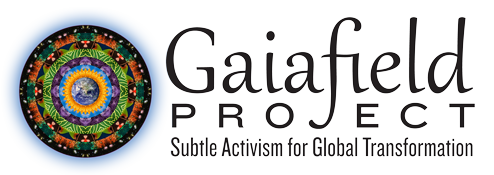Subtle Activism is an activity of consciousness or spirit, such as prayer, meditation, or ecstatic dance, intended to support collective healing and social change. Subtle Activism grows from the idea that there are many effective ways – some newly emerging, many as old as humanity – to positively influence social change other than overt political action.
Traditional methods of front-line activism (e.g., marches, demonstrations, putting one’s body in front of bulldozers, etc), represent only the most immediate and direct expressions of action for social change. It is possible to identify a spectrum of social action that proceeds from the more obvious or overt forms down a graded scale of increasing subtlety. At the subtlest level, even certain activities of consciousness or spirit can be recognized as forms of social action.
A global meditation and prayer event, in which hundreds of thousands of people around the planet unite in silence and prayers for world peace, is a prime example of subtle activism.
For two excellent introductory articles about subtle activism, please see David Nicol’s Subtle Activism: Applying Spiritual Power for Social Change and Sean Kelly’s The Hidden Face of Wisdom – Towards an Awakened Activism.
Subtle activism is primarily intended for collective healing and social transformation. Meditating for one’s own liberation would not be considered subtle activism, but meditating for peace on Earth would be. Praying for the health of one’s personal friend is not subtle activism, but praying for a community struck by natural disaster is. It is important and wonderful to send healing to ourselves, our friends, and our families, but the goal of subtle activism is to encourage us to extend our healing focus beyond our local family to our greater community.
Forms of Subtle Activism
Many kinds of actions can exert subtle positive influence on the social realm and thus might be considered forms of subtle activism. For example, certain kinds of intellectual contributions, and various forms of inspirational art and music are types of action that support positive social change through less overt or direct means than conventional approaches to activism (demonstrations, marches, lobbying, etc). We are especially interested in the spiritual dimension of subtle activism, hence our definition: “those forms of spiritual practice intended to support collective healing and social change.”
“Spiritual practice” means prayer, meditation, ritual, or any other kind of spiritual or consciousness practice, from any tradition. It includes ecstatic dance, devotional chanting, and other kinds of expressive practices. We understand that the word “spiritual” means different things for different people. We consider a practice to be “spiritual” if it is oriented toward wholeness and healing and motivated by universal values such as love, compassion, and universal justice. It is not necessary that the approach be explicitly spiritual. For example, we would consider a practice that inspires awe and reverence for the Earth to be spiritual, even if the word spiritual is not mentioned.
Subtle activism also includes certain kinds of relational practices intended to help heal aspects of our collective shadow, especially when these take place in a sacred context. In individual inner work, most approaches include some form of the following two dimensions: 1) Making contact with our deeper essence through meditation, prayer or other spiritual practice; and 2) Transforming our limiting beliefs and behavior patterns by working through critical issues from our personal history.
Similarly, an important dimension of spiritual practices oriented toward collective healing and social transformation is a process of bringing up to consciousness ancient wounds and limiting patterns of thought inherited from our collective history (e.g., racism, sexism, heterosexism, anthropocentrism). Leading examples of this kind of subtle activism include Will Keepin’s Gender Reconciliation work (in which women and men come together in sacred space to heal gender injustice), Joanna Macy’s “The Work that Reconnects” (in which people uncover their innate connections with each other and the web of life), and Arnie Mindell’s WorldWork (an approach to working with groups that acknowledges and engages the political and psychological dimensions of issues that arise between members of the group).
We believe that there is enormous untapped power in these kinds of practices to support collective healing and social change.
